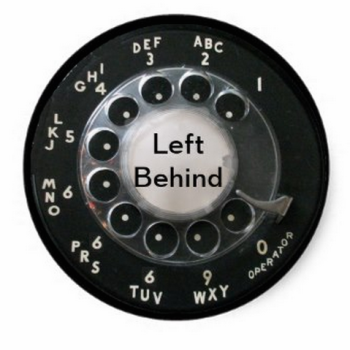Matt Yglesias discusses the myth of a flat Earth:
People assert all the time that the Earth “looks” flat, but it’s hard to know how to understand this. The Earth looks exactly the way a large roughly spherical object would look precisely because it is a large spherical object. If you sit in a boat on the open ocean, the angle between your eye and the surface of the water changes only very slowly but eventually you hit a horizon line when you can’t see beyond the curvature of the earth. If you move forward, you’ll see that you don’t get any “closer” to the horizon. If the Earth were something other than a large roughly spherical object, it would look different. You’d be able to move close to the horizon, or there’d be an illusion of convexity as the angle between the surface of the water and your eye decreased with distance.
The Greek geographer Strabo — who lived around the same time as Caesar Augustus — said the same thing about seagoing people observing the roundness of the Earth. Strabo figured this was common knowledge at least since the time of Homer, centuries earlier, describing it as “obvious”:
… It is obviously the curvature of the sea that prevents sailors from seeing distant lights at an elevation equal to that of the eye; however, if they are at a higher elevation than that of the eye, they become visible, even though they be at a greater distance from the eyes; and similarly if the eyes themselves are elevated, they see what was before invisible. This fact is noted by Homer, also, for such is the meaning of the words: “With a quick glance ahead, being upborne on a great wave, [he saw the land very near].” So, also, when sailors are approaching land, the different parts of the shore become revealed progressively, more and more, and what at first appeared to be low-lying land grows gradually higher and higher.
This observation — as old as seafaring itself — combined with other evidence such as sun dials and the changing visibility of southern constellations as one headed south, made the roundness of the earth an almost universally acknowledged fact throughout the west since centuries before the birth of Christ.
That quote from Strabo, by the way, comes via one of several fascinating Wikipedia articles on the subject. The entries for “Spherical Earth,” “Flat Earth” and “Myth of the Flat Earth” are excellent overviews, full of strange details. (See, for example, St. Augustine’s argument against the possibility of human inhabitants in “the Antipodes” being the descendents of Adam. Oops.)
All of those articles contradict what I, like millions of other American schoolchildren, often heard from teachers, textbooks and from Ira Gershwin: “They all laughed at Christopher Columbus / When he said the world was round …” As Matt points out in his post, no they did not. They laughed at Columbus when he said the world was smaller than everyone knew it to be. Columbus was spectacularly wrong on that point:
This whole subject is often filled with myth. They still seem to teach some people in school that Christopher Columbus’ voyage was controversial because some people didn’t believe that the world was round. In fact, most cultures that commenced seafaring independently uncovered the fact that the Earth is roughly spherical precisely because the Earth looks like a sphere once you go someplace where you can get the relevant perspective. By the time of Columbus, the spherical nature of the Earth had been well-understood in the West for a couple thousand years. He had trouble attracting support for his voyage because skeptics argued (correctly) that Columbus was vastly underestimating the distance between the western coast of Europe and the eastern coast of China.
I was one of those “some people” taught this myth in school, although later teachers and professors corrected that. And not just history and geography teachers, either. We read Dante’s Inferno, including that wonderful bit in Canto XXIV in which the poets make their exit from Hell. Dante follows Virgil as he climbs down the shaggy back of Lucifer himself to the very center of the Earth, at which point they make their escape by climbing up the rest of the way.
This is the passage I always cite when I encounter the legendary lies about brave Columbus disproving some supposedly universal notion of a Flat Earth.
He laid fast hold upon the shaggy sides;
From fell to fell descended downward then
Between the thick hair and the frozen crust.When we were come to where the thigh revolves
Exactly on the thickness of the haunch,
The Guide, with labour and with hard-drawn breath,Turned round his head where he had had his legs,
And grappled to the hair, as one who mounts,
So that to Hell I thought we were returning. …
Bewildered, Dante follows upward towards Satan’s feet, then asks Virgil to explain:
“Ere from the abyss I tear myself away,
My Master,” said I when I had arisen,
“To draw me from an error speak a little;Where is the ice? and how is this one fixed
Thus upside down? and how in such short time
From eve to morn has the sun made his transit?”And he to me: “Thou still imaginest
Thou art beyond the centre, where I grasped
The hair of the fell worm, who mines the world.That side thou wast, so long as I descended;
When round I turned me, thou didst pass the point
To which things heavy draw from every side,And now beneath the hemisphere art come …
Here it is morn when it is evening there;
And he who with his hair a stairway made us
Still fixed remaineth as he was before.
That’s from a book widely known and widely read for more than a century before Columbus’ voyage.
So ho, ho, ho. Who’s got the last laugh now?












